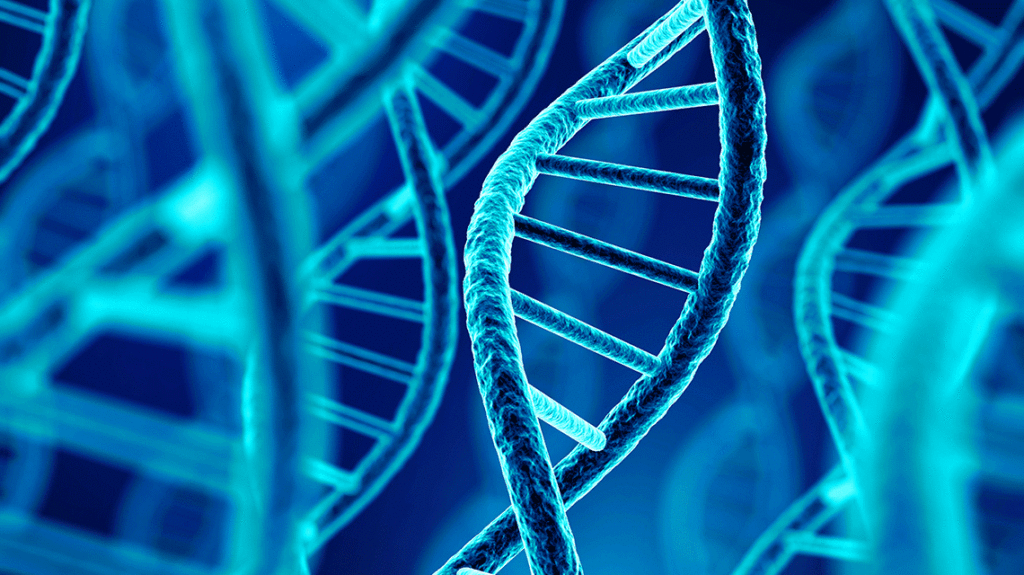The Sound of Silence: The Impact of “Silent” Genetic Variation in Health and Disease
The Sound of Silence: The Impact of “Silent” Genetic Variation in Health and Disease https://pediatricsnationwide.org/wp-content/uploads/2021/02/AdobeStock_134232290-DNA-header-1024x575.gif 1024 575 Lauren Dembeck Lauren Dembeck https://pediatricsnationwide.org/wp-content/uploads/2021/03/Dembeck_headshot.gif- May 18, 2021
- Lauren Dembeck

Despite widespread scientific interest in messenger RNA (mRNA) structure, its role in human health and disease remains poorly understood. Researchers at Nationwide Children’s Hospital have developed novel software and metrics to identify “silent” genetic variants that affect mRNA folding and may underlie rare genetic disorders.
Historically, synonymous or “silent” genetic variants — those in protein-coding regions of the genome that cause differences in the transcribed messenger RNAs (mRNAs) but that do not impact the final translated protein sequences — have been assumed to be mostly irrelevant for disease biology. After questioning this assumption, researchers at Nationwide Children’s Hospital found that “silent” genetic variants that are predicted to disrupt mRNA structure are found less often in the human population than those that do not, meaning certain variants may have pathogenic effects.
“When synonymous variants are ignored, we are almost certainly missing novel plausible explanations for genetic disease,” says Peter White, PhD, who leads the Computational Genomics Group in The Institute for Genomic Medicine at Nationwide Children’s and was the senior author of the publication in GigaScience.
While mRNA sequences are usually thought of as strings of letters or straight lines, they are not. These molecules fold into complex structures that are important for biological functions. After developing novel software and an mRNA folding score, the researchers conducted a big data experiment — resulting in over 5 billion data points — by computationally generating every possible mutation that could occur within all known human mRNA transcripts and predicting their impacts on RNA stability and structure.
If a given synonymous variant is truly silent (i.e., no impact on an mRNA’s function or translation to protein), then the team would expect all possible variants at that position to be at similar frequencies in the human population.
“In the case of a rare disorder, if a change in the patient’s genome introduces a synonymous variant, it would not be considered as a potentially disease-causing pathogenic variant by previous tools that look only at protein disruption,” says co-author Mr. James Li, who originally conceived of the study while conducting undergraduate research with Dr. White. Mr. Li is now an MD/PhD student at the University of Chicago. “Now, we can annotate the genomes of patients with our mRNA folding score and potentially identify mutations that cause rare disease by impacting the mRNA structure.”
By studying the genomes of over 200,000 people, the team discovered that synonymous variants that highly impacted the structure of mRNA had lower than expected frequencies in the population, suggesting that these parts of the genome are essential for proper mRNA functioning and may play critical roles in disease.
Though there is sparse scientific literature on pathogenic synonymous variants, the team identified a set of nine such variants that have well-supported evidence of their pathogenicity and demonstrated that these variants impact mRNA structure, as indicated by their novel RNA folding statistic — providing an important proof of principle.
Even with advances in genome sequencing, two thirds of patients with a suspected genetic disease have no changes in the protein coding regions of their genome.
“Now, we want to take this score and then start looking at the genomes of patients with genetic disease who are yet to receive diagnoses,” says Dr. White. “In the work that we do in rare disease, it’s been so important to help the families find answers and to understand what’s causing the disease in their child.”
While the mRNA folding score alone cannot definitively provide a diagnosis, it provides a new way for scientists to study the nonprotein coding regions of the genome, helping to find answers for patients with rare disease or other genetic conditions. Dr. White’s team is also interested in the unexplored role that these synonymous variants might play in pediatric cancers.
Reference:
Gaither JBS, Lammi GE, Li JL, Gordon DM, Kuck HC, Kelly BJ, Fitch JR, White P. Synonymous variants that disrupt messenger RNA structure are significantly constrained in the human population. Gigascience. 2021 Apr 5;10(4):giab023. doi: 10.1093/gigascience/giab023.
Image credit: Adobe Stock
About the author
Lauren Dembeck, PhD, is a freelance science and medical writer based in New York City. She completed her BS in biology and BA in foreign languages at West Virginia University. Dr. Dembeck studied the genetic basis of natural variation in complex traits for her doctorate in genetics at North Carolina State University. She then conducted postdoctoral research on the formation and regulation of neuronal circuits at the Okinawa Institute of Science and Technology in Japan.
-
Lauren Dembeckhttps://pediatricsnationwide.org/author/lauren-dembeck/
-
Lauren Dembeckhttps://pediatricsnationwide.org/author/lauren-dembeck/
-
Lauren Dembeckhttps://pediatricsnationwide.org/author/lauren-dembeck/
-
Lauren Dembeckhttps://pediatricsnationwide.org/author/lauren-dembeck/January 29, 2019
- Post Tags:
- Genomics
- Health Technology
- Rare Diseases







